 I just received a question through the Home Brew Audio YouTube channel (http://www.youtube.com/user/homebrewaudio) about recording vocals at home.
I just received a question through the Home Brew Audio YouTube channel (http://www.youtube.com/user/homebrewaudio) about recording vocals at home.
This person doesn’t understand why when they sing loud into the mic in their home recording studio, the sound comes out distorted. Here’s this person’s question and our answer:
Q: well what I’m trying to understand is why I can’t sing as loud as I like… I recorded in a studio a few times, and i could sing as loud as I like, and similar things, however now the trimming affect works and the software break the voice into a horrible annoying sound… so sorry I don’t know how to describe it any better.
I connect my mic to a little boxy thing that my dad bought with it, called M-Audio (ed: he probably means the M-Audio Fast Track) that connects to my computer through USB.
Thanks alot, Dave :]
A: Dave, I know exactly what you mean. You have two options. The best one is to get a compressor and/or limiter, and connect it to the M-Audio box (Fast Track is it?). A compressor will lower your voice loudness when it starts getting loud, and a limiter will prevent it crossing a certain loudness level entirely. You would use the “insert” sockets on the back of the box. I use a great little compressor called the Really Nice Compressor (I’m not kidding:)), by a company called FMR audio. There are lots of different kinds out there though.
The second way is to back way away from the mic for the loud bits. If the entire song is loud, turn the “gain” knob down until the loudest parts don’t clip (make the red light on the M-Audio box go on), and then raise the level of the recorded wave after the fact. The problem there though is that it might let more noise in along with your voice, which you would then be turning up at that last stage.
I hope that helps!
Ken
note: Dave is not the real name of the person who asked the question. We changed it for privacy reasons.
Home Recording Equipment
Voice Recording Software – What You Should Use
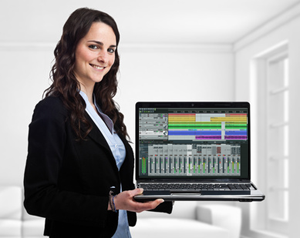 The term voice recording software, especially in the context of recording voice overs, is actually sort of a misleading term. That’s because pretty much any software that is designed for recording on a computer is going to be just as capable of recording the human voice as any other audio. So the real question, becomes something more like “what else other than voice recording will I need to do with a particular audio recording program?”
The term voice recording software, especially in the context of recording voice overs, is actually sort of a misleading term. That’s because pretty much any software that is designed for recording on a computer is going to be just as capable of recording the human voice as any other audio. So the real question, becomes something more like “what else other than voice recording will I need to do with a particular audio recording program?”
Let’s take an example. Many folks use a free recording program called Audacity, which is pretty darned amazing for a piece of free-ware. If all you ever really want to do is record your voice to do introductions for your own programs, videos or podcasts, Audacity is likely to be the only audio software you’ll ever need. It has the ability to record at high resolution, do basic edits and produce professional sounding audio.
If, on the other hand, you also want to record music, especially involving multiple tracks or in-depth and intuitive editing, Audacity probably isn’t your best choice. Once you get beyond the basic “push-record/stop/play” functions, Audacity loses out on simplicity and capability. It becomes worth your time and money at that point to use two programs, one designed for recording and mixing, and the other designed for editing and finishing/producing.
It may seem counter-intuitive, but think of it this way. It is ultimately better for your workflow, not only physically but mentally as well, if you can compartmentalize discrete tasks, especially when the software being
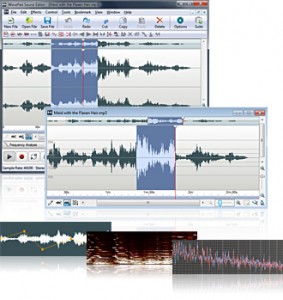
used is specifically designed for that purpose. The more focused the reason for a program, the faster and more intuitive it tends to be for users. In my case, I use a program called Reaper (by Cockos), for recording and mixing, then I use another program called Adobe Audition for editing and final production. This workflow is so natural to me that even if I need to record a quick voice over job, I open Reaper to do the recording, then I double-click on the audio item on the track to automatically open my editing program, Audition. I can then quickly reduce ambient noise, fix p-pops, even out and optimize volume, and save as any format I want.
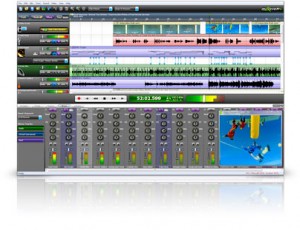
Now obviously these are not the only two programs out there you can use for this kind of work-flow. You could use Reaper + Audacity, for example. There are also some really affordable, intuitive and powerful new-comers, such as Mixcraft 8 for recording and mixing. And if you need more capability or better workflow than Audacity can provide, a really good (and much more affordable than Audition) alternative is WavePad Sound Editor.
So basically it comes down to this. Any recording program is going to be at least as good at recording voice as it is at recording anything else, so don’t worry about looking for voice recording software so much as something more generic, like audio recording software. At that point, you just have to know what capabilities you’ll need. Extremely basic voice over jobs, like for your YouTube videos or podcasts, can be handled by something like Audacity. But if you want to ad any capability beyond that, the best choice is to divide and conquer with two programs working together, one for recording and mixing, and the other for editing and final production.
Video: Cover Recording of My Eyes From Dr. Horrible
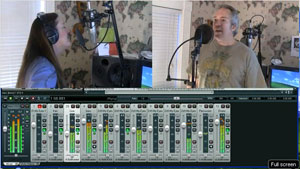 The video for this is finally done! Recently we published an article on how to take a song apart (figuratively) in order to learn how the pros record music. In order to demonstrate this concept, we used a song from Joss Whedon’s Dr. Horrible’s Sing-Along Blog. The song is called My Eyes (sometimes referred to as “On The Rise”), Music by Jed Whedon; Lyrics by Maurissa Tancharoen, Jed Whedon, and Joss Whedon. That article is here https://www.homebrewaudio.com/cover-recording-of-my-eyes-from-dr-horrible
The video for this is finally done! Recently we published an article on how to take a song apart (figuratively) in order to learn how the pros record music. In order to demonstrate this concept, we used a song from Joss Whedon’s Dr. Horrible’s Sing-Along Blog. The song is called My Eyes (sometimes referred to as “On The Rise”), Music by Jed Whedon; Lyrics by Maurissa Tancharoen, Jed Whedon, and Joss Whedon. That article is here https://www.homebrewaudio.com/cover-recording-of-my-eyes-from-dr-horrible
We were asked to do a video of the result and have finally finished that, though it took several days longer than we (and by “we,” I mean me:)) anticipated. The result was worth it though. See below:
[jwplayer mediaid=”4381″]
The detailed, step-by-step tutorial version of the video has been added to “The Newbies Guide to Audio Recording Awesomeness” video course, as well as to The Newbies Guide To Audio Recording Awesomeness 2: Pro Recording With Reaper.
Cheers!
Ken
ProAudio.com Launches "12K Giveaway" Sweepstakes
Home Recording Equipment – Accordions & Didgeridoos: Microphone Techniques… The Old Soundman: Lawyers & Open Mics Church Sound Files: The Nature Of Soundcheck…
Read the full article here:
ProAudio.com Launches “12K Giveaway” Sweepstakes
Audio Recording Equipment I Cut My Teeth On
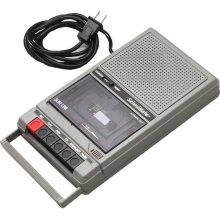 Over on the Home Recording Forum, someone started a post entitled: All You Old Farts – Born Before 1967. Now I don’t know what the significance of 1967 is, but by that definition (born in 1964), I guess I’m an old fart (even though I LOOK fabulous…shyaa). The idea was to get some idea what audio recording equipment we used way back when.
Over on the Home Recording Forum, someone started a post entitled: All You Old Farts – Born Before 1967. Now I don’t know what the significance of 1967 is, but by that definition (born in 1964), I guess I’m an old fart (even though I LOOK fabulous…shyaa). The idea was to get some idea what audio recording equipment we used way back when.
Anyway, the question was:
Come on tell us what gear were you weaned on? Inspired by the “how do you know so much post”
Here is my answer, for whatever educational value it is worth:
Wow, I’m officially an old fart? Do I get a card or something?
I started out with an old cassette recorder similar to the Hamilton Electronics HA-802 Cassette Player and Recorder. I would play a guitar part and sing along (or play another guitar part along for those cool Jim Croce songs) while recording into my brother’s boom box. I used the little built-in condenser mic for both. Then I would play those 2 parts back from the boom box onto my cassette recorder as many times as I needed instruments and harmonies. This hiss was incredible.
Eventually I graduated to doing the same thing but with better machines, like the ones in entertainment centers, and used a PA mixer in there somewhere. Finally, in 1988, I bought a Tascam Porta 5 4-track cassette recorder. That was a life-changer. One more 4-track cassette machine and a Sony DAT machine later, I got my first digital machine, the Roland VS-840. The next year I bought the VS-880 off e-bay for the amazing deal of $1200. That was my primary throughout the early 2000s, when I added outboard gear, monitor speakers (starting with Alesis Monitor Ones…now using the Event TR-8s), separate mic preamp (the Peavy VMP 2 Tube mic preamp, which I still use), compressor, EQ, etc. Then I made the jump to doing everything in the computer right around 2003, using Adobe Audition. Eventually I added Reaper as my DAW and continue to use AA as my editor.
That’s about it in a nutshell from this old fart.
Cheers!
Ken